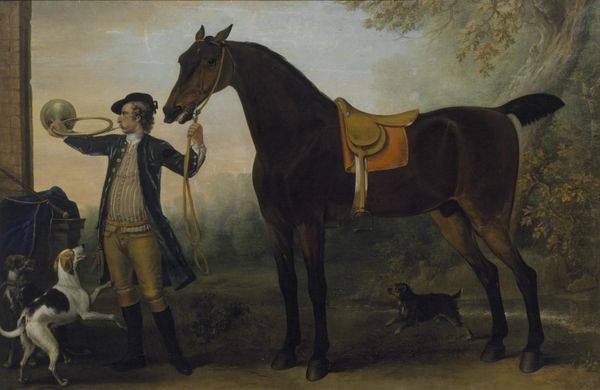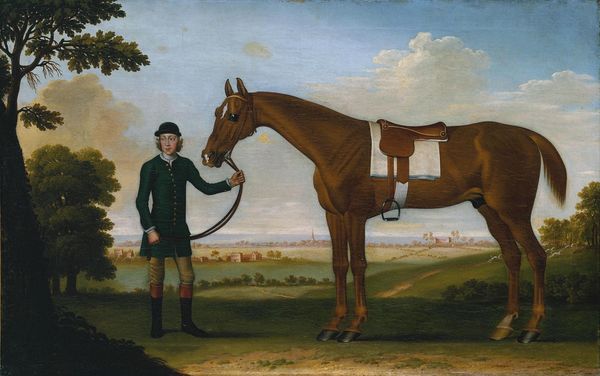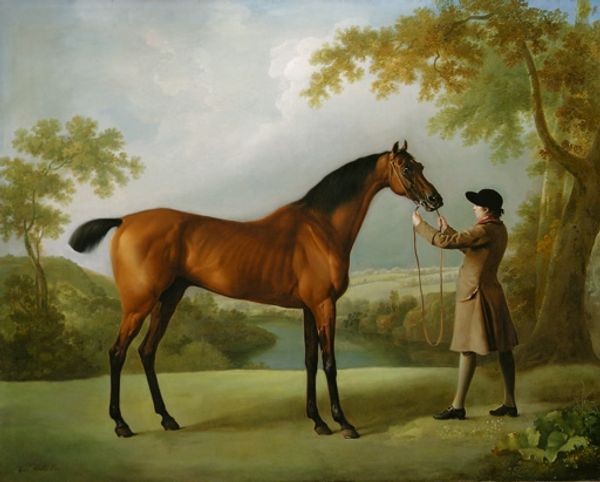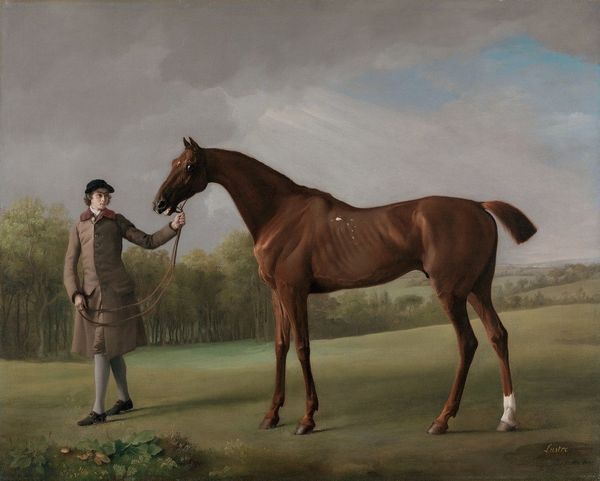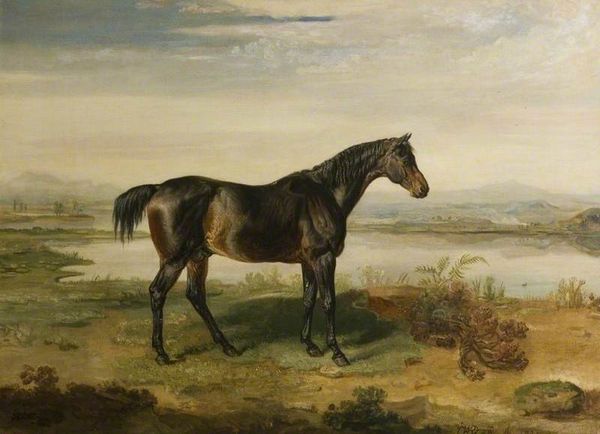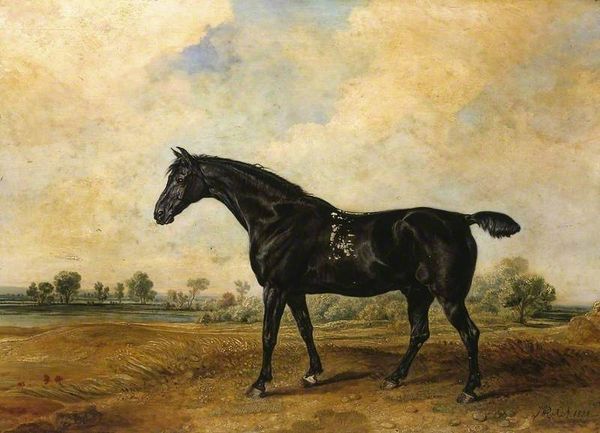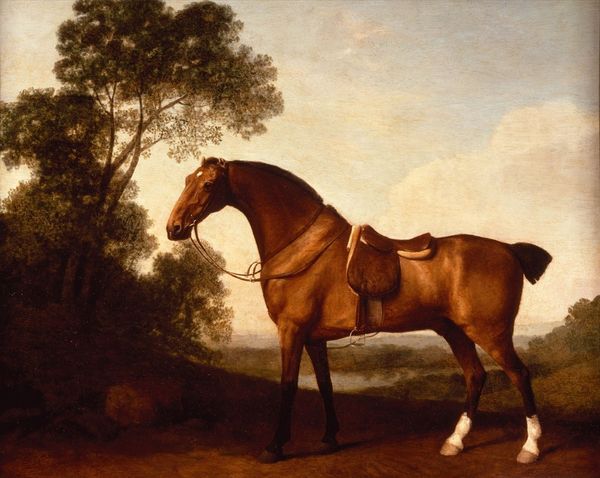
painting, oil-paint
#
painting
#
oil-paint
#
landscape
#
oil painting
#
romanticism
#
animal portrait
#
horse
#
surrealism
#
genre-painting
#
academic-art
Copyright: Public domain
Curator: My first impression? The horse has such long legs and thin hooves. Is he real, or some fever-dream vision? Editor: This is James Ward’s 1835 painting "’Rockingham’, with His Owner, John Theobald, and Jockey, Jem Robinson.” An oil on canvas, typical of its time. Though I’ll admit, Rockingham does seem rather...elongated. Curator: Elongated is one word for it! I can't shake this sense that the artist maybe saw something beyond pure equine anatomy. It’s more like an embodiment of speed and elegance... an animal whose form speaks to some ideal version of itself. Editor: It’s tempting to read symbolism into every brushstroke, especially considering Ward's place within the Romantic movement. Perhaps that stretched physique does signify aspirations and human longing for transcendence, that connection to nature, and maybe the British Imperial expansion as well? The thoroughbred as a symbol of British excellence and aristocratic control? Curator: Precisely! Even the background whispers something. See how the soft landscape almost fades? This focuses us on the three figures in the foreground. There's a hierarchy being subtly depicted between the horse, his owner, and the jockey. Rockingham commands respect. Editor: And in that era, the imagery of a bloodstock racehorse was undeniably powerful, intertwined with social status and inherited privilege. John Theobald, the owner, exudes self-assurance; Jem Robinson, the jockey, stands slightly apart, both integral, yet defined by their relative rank in this rural tableau. But what do you think, why that specific angle and focus? Curator: Maybe because the artist also struggled with those categories in himself. Ward had enormous talent, but his professional life and the money he earned felt always unsteady to him. Did he think it was sheer dumb luck where he placed in the larger scheme of society? Is the racehorse the winner but also yoked and burdened in the scheme? I do not know, really. Editor: Regardless, through his choices, the painter created something more profound. An image laden with all kinds of narratives about status, legacy, and the relentless pursuit of perfection. Thank you for opening that vista for me. Curator: And thank you; It has been great fun seeing Ward's racehorse with you!
Comments
No comments
Be the first to comment and join the conversation on the ultimate creative platform.
